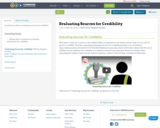
Introductory video on evaluating sources for credibility.
- Subject:
- Education
- Material Type:
- Teaching/Learning Strategy
- Date Added:
- 08/01/2018

Introductory video on evaluating sources for credibility.
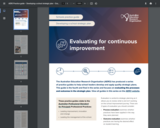
This guide is the fourth and final guide in the series and focuses on evaluating the processes and outcomes in the strategic plan.
Evaluation is central to strategic planning as it allows you to review what is and isn’t working on the school improvement journey. There are 2 types of evaluation you should consider:
Process evaluation examines whether practices have been applied in the way they were planned.
Outcome evaluation examines whether practices are having the desired effect on student learning.
Process and outcome evaluation both play key roles at different stages of a strategic plan’s life cycle.
This guide recommends practical steps for evaluating processes for improving practices, as well as the effect of these practices on student learning. We recommend reading this guide after you have read the third guide in this series, Selecting Practices to Deliver Improvement.
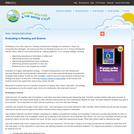
Evaluating has been called one of the six most important reading comprehension strategies. In this article, it is also considered as a strategy for analyzing and interpreting data. This professional development article appears in the free, online magazine Beyond Weather and the Water Cycle, which integrates science education and literacy instruction for K-grade 5 teachers. Each issue examines one of the recognized essential principles of climate literacy and the climate sciences and one or more reading strategies for elementary teachers and their students.
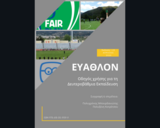
Students' moral education appears increasingly necessary in our days, as the cultural and moral frame of modern life has compressed moral values like respect, personal and social responsibility, fairness, solidarity, tolerance, acceptance of diversity. The development of moral-active citizen is considered as main objective in policies of European Union and United Nations Organization, so that intense moral decline phenomena of our days could be faced. Socrates argued that “Virtue is teachable”, since parameters of moral character such as empathy, collaboration culture, problem solving skills are being developed throughout all our lifespam.
Sport engagement often emphasizes in cognitive and kinetic skills overlooking social, sentimental and psychological skills. Thus, just participating in sport does not necessarily promote moral development. Consequently, sport programs have to incorporate strategies directed at the development of moral values and moral reasoning.
Social scientists argue that, it is not possible to develop personal and social responsibility in students, just by oral instructions. Only “learn-by-doing” methods could help students transfer the developed skills, in different contexts of their lives.
Physical Education has been an outstanding setting for applying moral development strategies, due to the opportunities it provides for reflection, role playing, responsibility building, solidarity and collaboration culture. For this reason, over the past two decades, moral development programs were applied in Physical Education, such as Teaching Personal and Social Responsibility Model (T.P.S.R.) and the Sport Education Model (S.E.M.). Solidarity, honesty, fairness, responsibility, collaboration, respect of self and others, are moral values that should be strengthened during a school PE session.
“Evathlon” could be described as an educational program aiming in developing those moral values, in the context of school Physical Education. By triggering students’ critical thinking and critical judgment on earlier experiences, as well as by engaging them in specifically planned sport experiences, morality development is sought.
Program’s main objective is to have a positive impact on students’ social behavior during sport events, as well as in other contexts of their social life. Educative interventions in the setting of school football events have been planned to gradually develop K7 to K9 students’ morality.
Being based on social cognitive theory and on structural learning theory, the interventions combine above-mentioned theories to provide better social interaction and develop moral reasoning in an optimal way. Students are being inspired and motivated by their “sport role models" using interactive tools (e.g. videos, word
clouds, quizzes, comics) in asynchronous e-learning environment (LMS Edmodo) and then during school football events they experience in practice respect in rules, interact, develop social skills, confront moral dilemma situations and cultivate their moral reasoning.
Physical Education and school sport events constitute ideal environments for experiential and moral dilemma situations, under conditions of safe and moderate competition. Moreover, football is a sport of moderate bodily contact, offering lots of occasions for social interactions that increase the potential of positive, as well as antisocial and illegitimate behaviors.
'Evathlon' innovates, as by using blended learning techniques, gives students a central role in the educational process, developing their experiences and facilitating their team-based approach to knowledge. Sport role models and specially designed “learn-by-doing” experiences promote the adoption of desirable fair play
behaviors.
Decisive for fulfilling the aim of Evathlon sport program, is the carefully designed educational process, which actively involves students in all stages, thus strengthening their engagement in it, providing opportunities for critical reflection, role playing, problem solving and adoption of “desirable behaviors”.
At the same time, program planning permits its feasible adjustment in the context of any individual or team sport. Its positive effect in the improvement of student social behavior is expected to be significant, confirming the effectiveness of the intervention and prompting its extensive adaptation in other teaching areas that have been outlined for school Physical Education.

In this presentation and discussion for high school students, students will learn a simple definition for algorithm and discuss the ways that algorithms shape social media content. Students will question whether the algorithms in their own social media allow them to pursue their interests or limit them. Students will explore ways to adjust settings, privacy and ad preferences to affect the algorithms in the platforms they use.
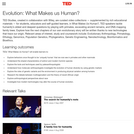
TED Studies, created in collaboration with Wiley, are curated video collections supplemented by rich educational materials for students, educators and self-guided learners. in What Makes Us Human?, TED speakers tackle humanitys oldest and deepest questions by playing with primates, excavating ancient remains, and DNA-mapping family trees. Explore how the next chapters of our own evolutionary story will be written thanks to new technologies that trace our origin.
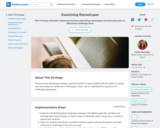
The Examining Stereotypes strategy supports teachers to equip students with the ability to analyze how stereotypes are reinforced or challenged in texts, and to understand the importance of challenging stereotypes.
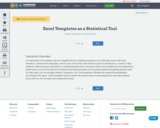
As mentioned in the syllabus, we are using MS Excel for statistical analysis in our OER stats course. We have, therefore, created three templates, one for each of the three units that the course is divided into, in order to help students make necessary calculations. Creating templates was a necessary steps since students are not expected to know how to use Excel functions for statistics and these templates are to guide students into getting relevant stats for their data, such as average, median, histograms, etc. Each template is divided into separate spreadsheets according to the topics. These templates help cut down the tedious work of evaluating statics and help students focus more on the concepts and analyse the results.
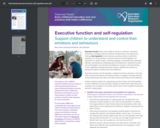
Executive function and self-regulation contribute to all five outcomes in the Early Years Learning Framework by enabling children to engage in learning, develop strong relationships with others and make choices that enhance their wellbeing.
This guide is one in AERO’s Tried and Tested series on evidenceinformed teaching practices in early childhood education and care settings that make a difference. Educators and teachers can use these guides to reflect on their practice and inform their planning for future instruction.

Executive functions enable humans to control impulses, stay focused, prioritise, and achieve our goals. They include 3 higher-order thinking skills that emerge during early childhood: working memory, inhibitory control and cognitive flexibility.
This early childhood learning trajectory looks at children’s progress in executive functions, to help you plan the next steps in their learning and development.
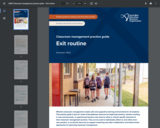
An exit routine at the end of a lesson provides a safe, predictable and organised end to learning. It’s important to plan dedicated time at the end of a lesson to ensure a consistent exit routine can take place every time students leave the classroom.
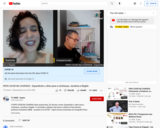
O PAPO COVID NA CHAPADA que discute o tema: Expandindo o olhar para a vizinhança: Jacobina e Região com a participação do professor Marcos Novais (UNEB)

“Rhetoric in the Real” is an experiential learning, student-driven, digital, multimodal, praxis-oriented, semester-long project hosted on our class WordPress site. Throughout the semester students post and respond to each other’s lived experiences. It requires students to dissect the variegated layers of meaning and persuasion present in a rhetorical device of their choosing.
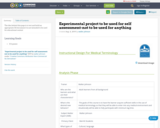
The idea behind this page is to test and build an appropriate OA document it is not intended to be used for educational content
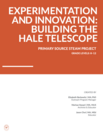
The primary sources in this project, drawn from the collections at the Rockefeller Archive Center, include correspondence and diagrams that document the process of fabricating what became a 200-inch Pyrex telescope mirror. These sources can be used to strengthen critical reading skills, to support inquiry-based learning exercises, and to expose students to the stories of trial and error that lie behind most scientific or engineering breakthroughs. Students are encouraged to annotate in the margins in order to support the development of document analysis and critical thinking skills. This project contains a suggested exercise that builds on the themes of the primary source documents.
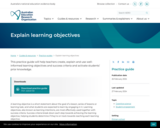
This practice guide will help teachers create, explain and use well-informed learning objectives and success criteria and activate students’ prior knowledge.
This practice guide will help you reflect and take action to develop your practice with a greater understanding of:
*the learning benefits when students understand the objectives of a lesson and how they can be successful
*specific techniques and strategies you can adopt to understand students’ prior knowledge, create well‑informed learning objectives and success criteria and use them effectively.
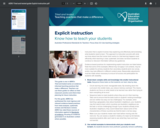
This guide is one in AERO’s Tried and tested series on evidenceinformed teaching practices that make a difference. Teachers can use these guides to reflect on their classroom practice and inform their planning for future instruction.
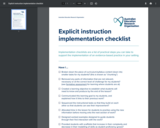
Implementation checklists are a list of practical steps you can take to support the implementation of an evidence-based practice in your setting.
This checklist focuses on implementing explicit instruction.
Have I...
*Broken down the piece of curriculum/syllabus content down into smaller tasks for my students? (this is known as “chunking”)
*Removed any parts of information that are not relevant, necessary or at the correct level of challenge for my students? (see formative assessment for learning where students are at)
*Created a learning objective to establish what students will need to know and produce by the end of the lesson?
*Communicated this learning goal to my students, and explained how it links to their previous work?
*Sequenced the instructional tasks so that they build on each other so that students can see their improvement?
*Allocated time in the lesson for students to practise using the new information before moving onto the next section of work?
*Designed worked examples designed to guide students through their first interaction with the work?
*Provided students with scaffolds that increase in their complexity and decrease in their modelling of skills as student proficiency grows?
*Planned some opportunities for feedback, including giving my students time to action the feedback, before moving onto the next chunk of work?

This rubric outlines a set of capabilities to do with the evidence-based practice of explicit instruction. It can help teachers and their teams implement explicit instruction by demonstrating a shared understanding of what it looks like in practice.
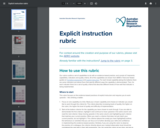
This rubric outlines a set of capabilities to do with the evidence-based practice of explicit instruction. It can help teachers and their teams implement explicit instruction by demonstrating a shared understanding of what it looks like in practice.